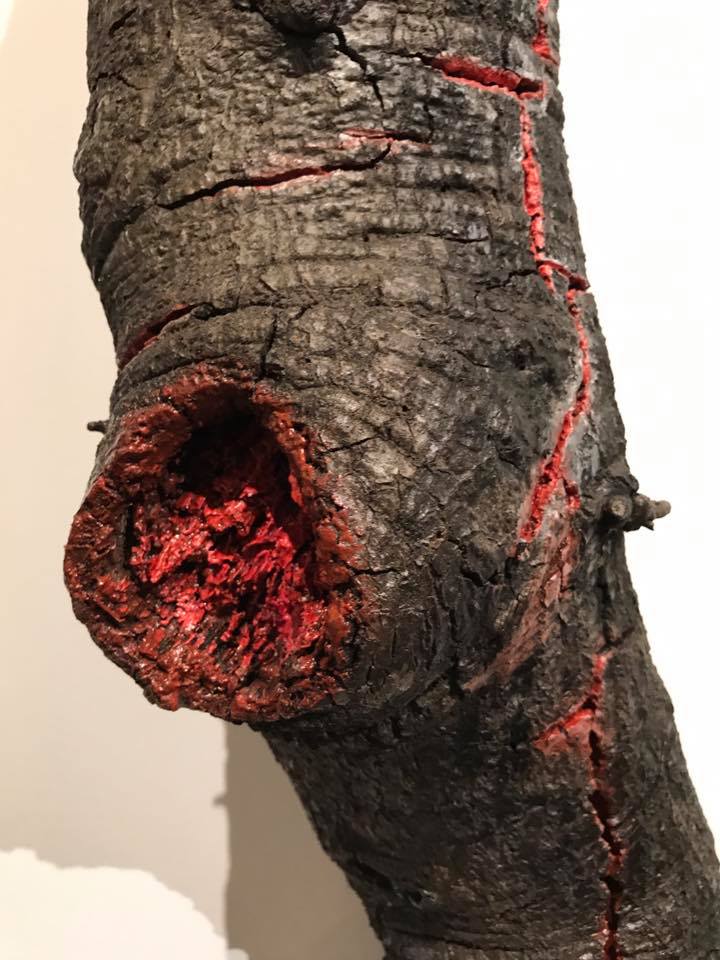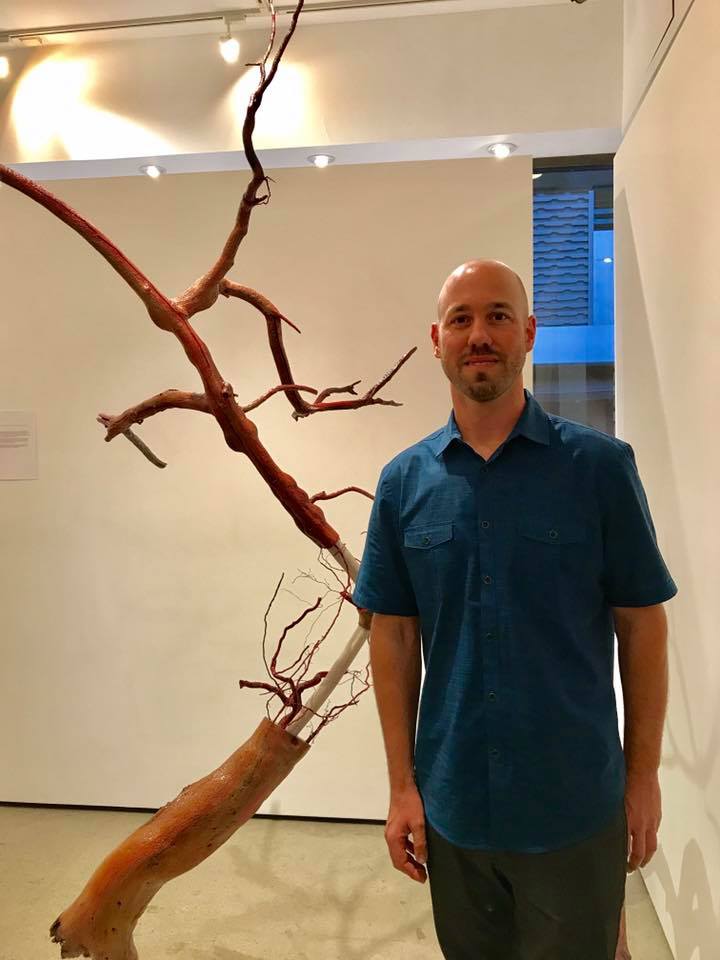
With Trees in Wolves’ Clothing, now through October 13th at the Garboushian Gallery in Beverly Hills, Curtis Weaver offers a whimsical yet thought-provoking look at nature. Call them tree portraits, Weaver’s sculptures compare and contrast nature, man-made objects, and the power of humans to alter our natural world. His view of evolutionary biology is fascinating, but even more so is purely alive quality of his mysterious, strange, absorbing work.

Weaver says “The accentuation of the connection we have to other living things has been a constant in my work for quite some time, and my overall interest in evolutionary biology. I became fascinated by the similarities between trees and human circulatory and respiratory systems after seeing the Bodies exhibition at a science museum in Tampa, Florida back in 2005. There were these amazing pieces where they had injected different groups and in some cases entire human bodies of blood vessels with a very luminous resin. They washed away the rest of the body mass with acid, leaving only the vessels displayed in bright red resin. I was completely amazed by this- being able to see the complete contours of the body represented only by tiny, stringy and frail blood vessels. I was reading a lot of big-history, geological timeline type literature, and Darwin’s Origin of Species at the time. I soon began focusing on trees and their function on the Earth– thinking of the Earth as an entity much like an individual organism with many moving parts, made up of millions of smaller organisms. Like a giant spherical animal, I suppose. That was the first time it really hit me how much the structural similarities of all these things were also echoed in their physiological functions.”

Weaver began creating work by building fictional and absurd but slightly plausible ecosystems comprised of biological relationships between the characters which operated in a co-dependence web, similar to in the real world. “These installations were like still-captured moments depicted by three-dimensional figures- much like a museum diorama you could walk through. The scenarios were meant to be informative and educational, but at the same time completely preposterous and goofy.”
When he began working on Trees in Wolves’ Clothing he wanted to be direct, and employ a narrative that resonates with viewers, drawing them into the gallery with
“something cute in the gallery windows” which upon entering the main space “turns into something similar, but larger and more grotesque.”
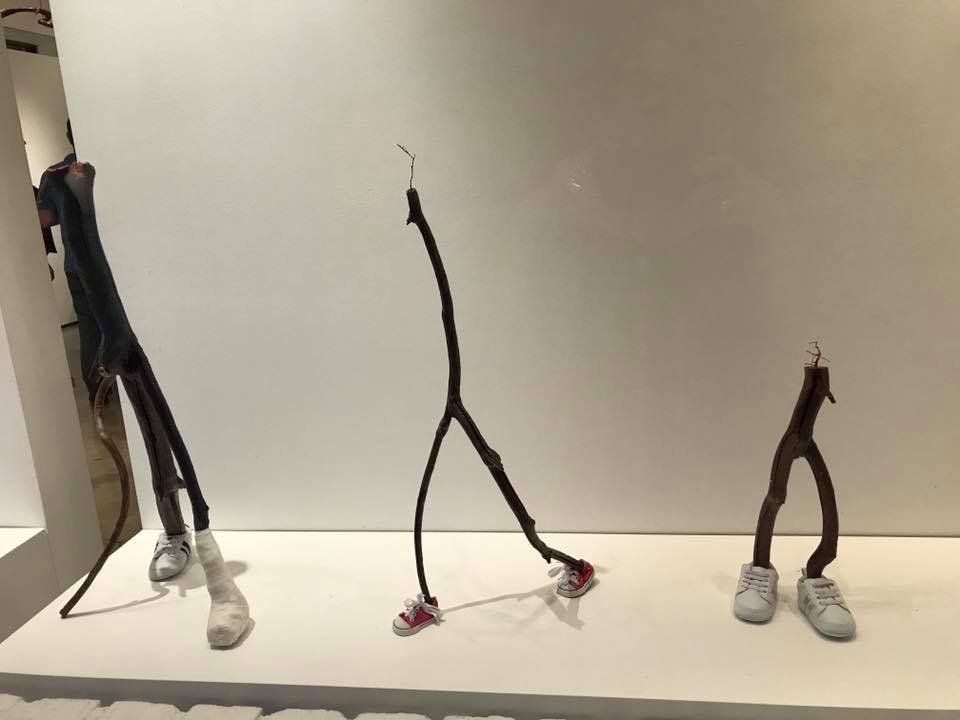
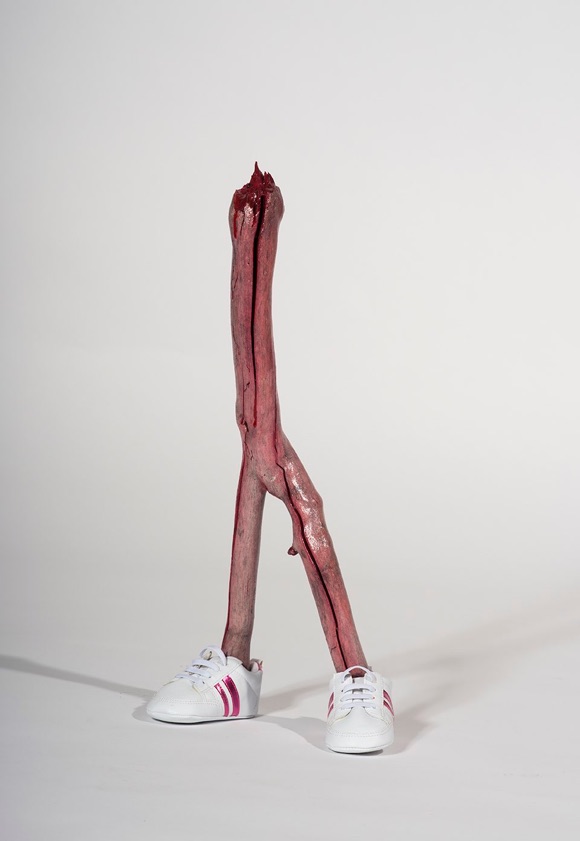
Weaver says “I think much of it was fueled by our current political climate, or maybe it was always there within me, but as of recent I had been feeling a bit more angsty and stirred up. The blatant negligence I see from our current presidential administration on environmental issues fueled a lot of my recent inspiration. Social issues hit hard, and even though I have my opinions on them, I accept that for numerous reasons, whether through ignorance, or just flat out bigotry, people get caught up in their own bubbles. I don’t agree with it, but I understand it. It doesn’t perplex me. With that being said, nothing heats me up and baffles me more than seeing someone in a position of such high authority – with ample support from the public – making astronomical decisions that catastrophically affect not just our nation, but the physical well-being of the entire planet.”
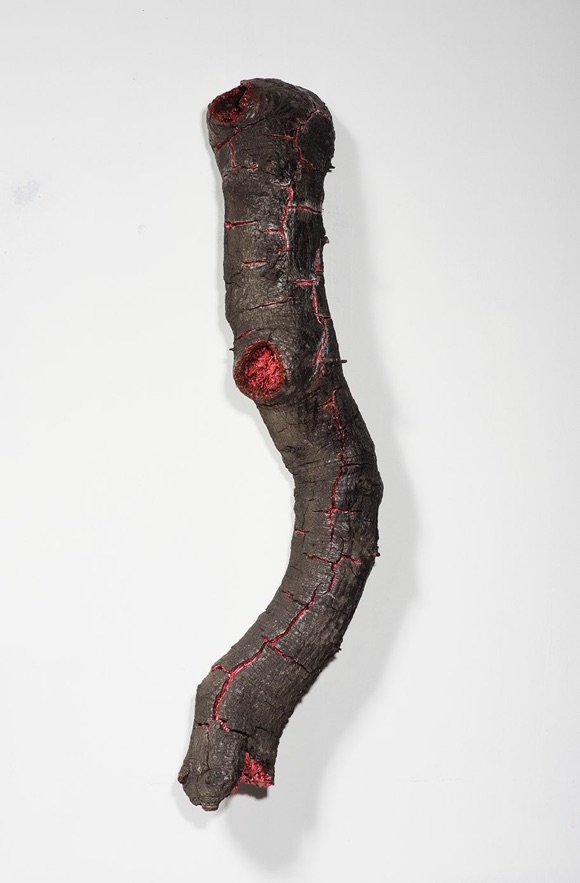
The artist adds “This is where I decided, if I’m going to make sculpture about the mentality that humans reign supreme over the earth through exploiting similarities between humans and other organisms, why not use the actual organisms? Why not use the actual trees? …it is meant to strike a nerve. It is meant to trigger thoughts and awareness of the biological connections between us humans and the rest of nature.”
And so Weaver set to work using natural materials. “A big part of these sculptures was the method of sculpting, being more of a reassembling of objects rather than a carving or shaping of a material. It was very important to me to only render the color and sheen with transparent finishes, letting the natural shape, texture and contrast sing through the surface and provide the visual relationship I was looking for.
I needed to get these things into pieces, so they needed to be broken or cut.”
“You will notice everywhere something is cleanly cut there is a blood-vessel looking branch growing out. The cross-cuts I felt also paired nicely with the pieces resembling hanging meat- accentuating the connection between not only the physicality of the wood to animal flesh, but processes we see as familiar with both, especially from a commodification perspective. Harvested cut logs and harvested cut animal parts.”

The character in each individual piece is one of the most unique aspects of this work. Weaver says he was able to “establish an overall aesthetic with a blurred finish line that I could decide upon spontaneously. And even more so, with quite a few of these pieces, the shape, form and detail of the found branch would have very much to say about how and why I would transform it. For instance, Trunkated was one of the earliest pieces. The splitting sections of bark repelling away from each other like the Pangea into the continents as we know them today caught my attention…and the fact that it pretty much looks like an elephant’s trunk! I experimented with getting bright visceral looking pigments into the cracks without disrupting the surface of the bark, wanting it to look like some kind of metamorphosis happening under the surface that you can see, but not completely see.”

For Weaver, one of his favorite parts about creating these works was the fact that he used natural substances to shape them. “I love the fact that instead of using gallons and gallons of toxic resins and hazardous processes I was able to pull these tree parts that were otherwise headed for a dumpster or burn pile, or maybe just left on location to rot or burn, and with 99% water-based surface treatments transform them into my favorite body of work to date.”
See for yourselves! Garboushian Gallery is located at 427 N. Camden in Beverly Hills.
– Genie Davis; photos: courtesy of the artist, and Genie Davis









